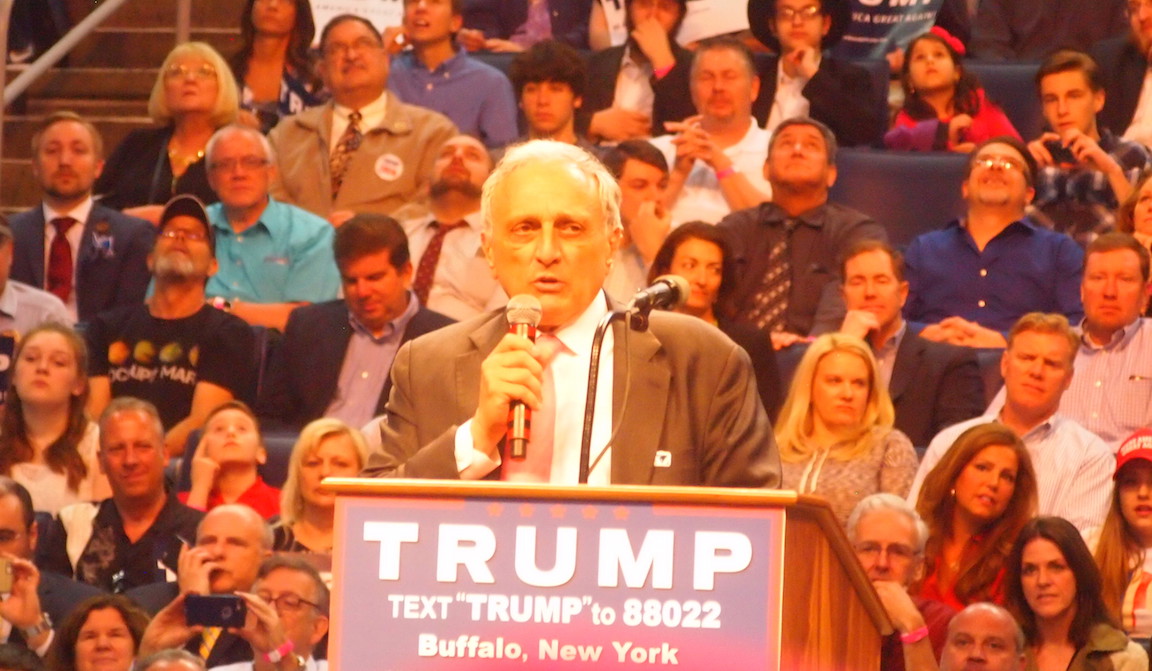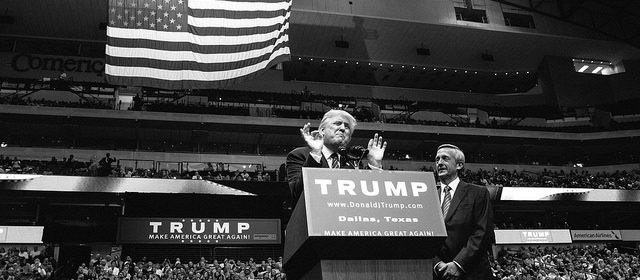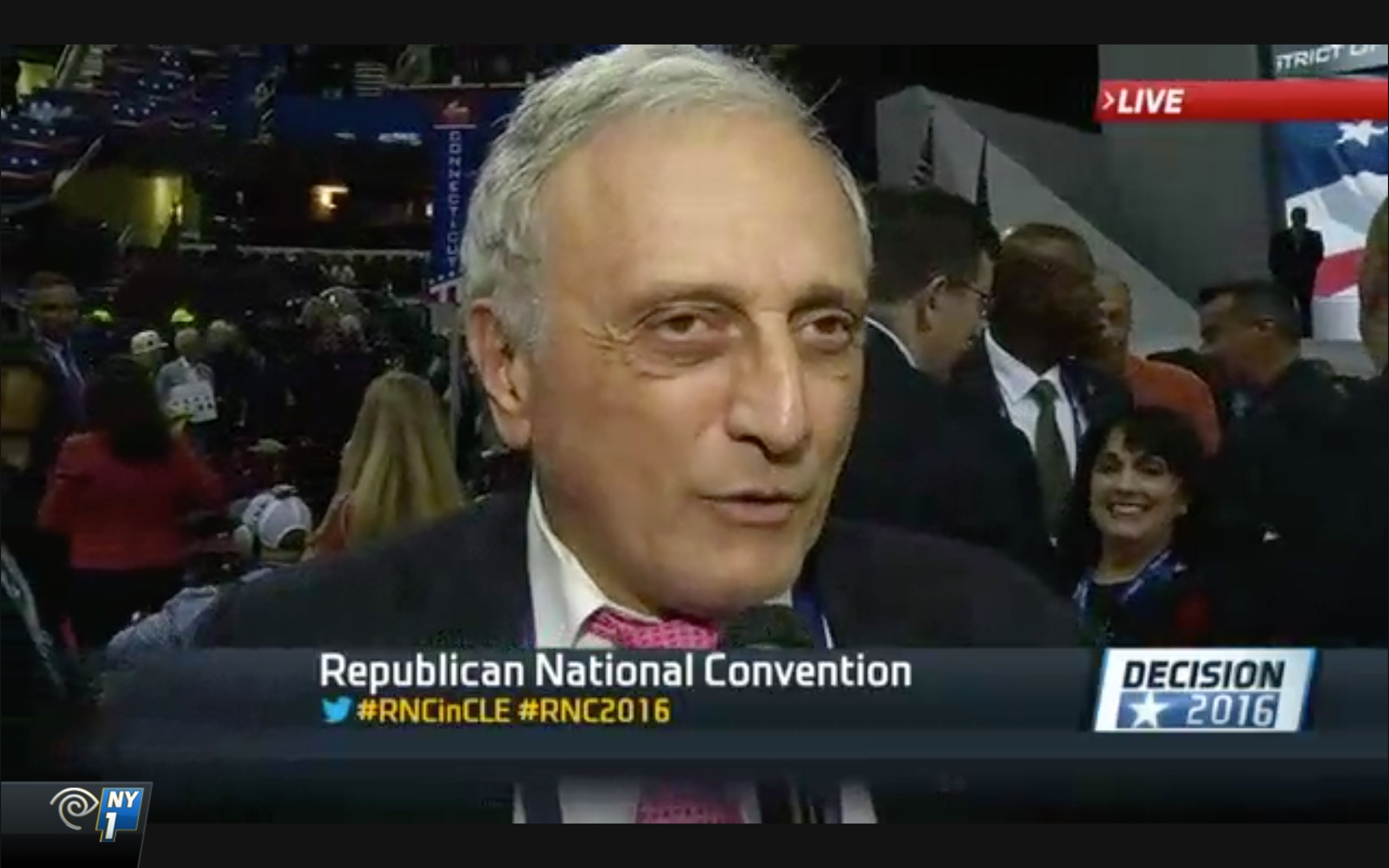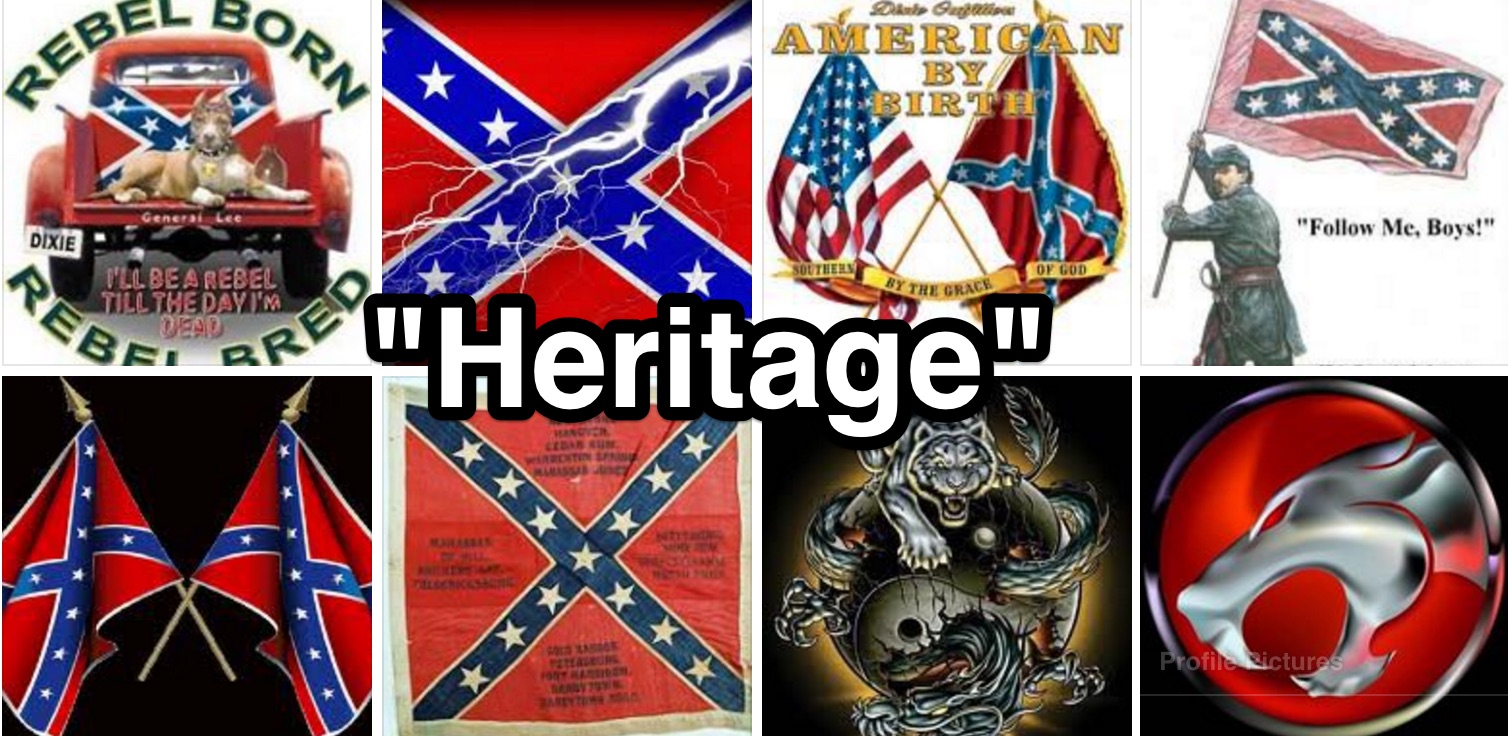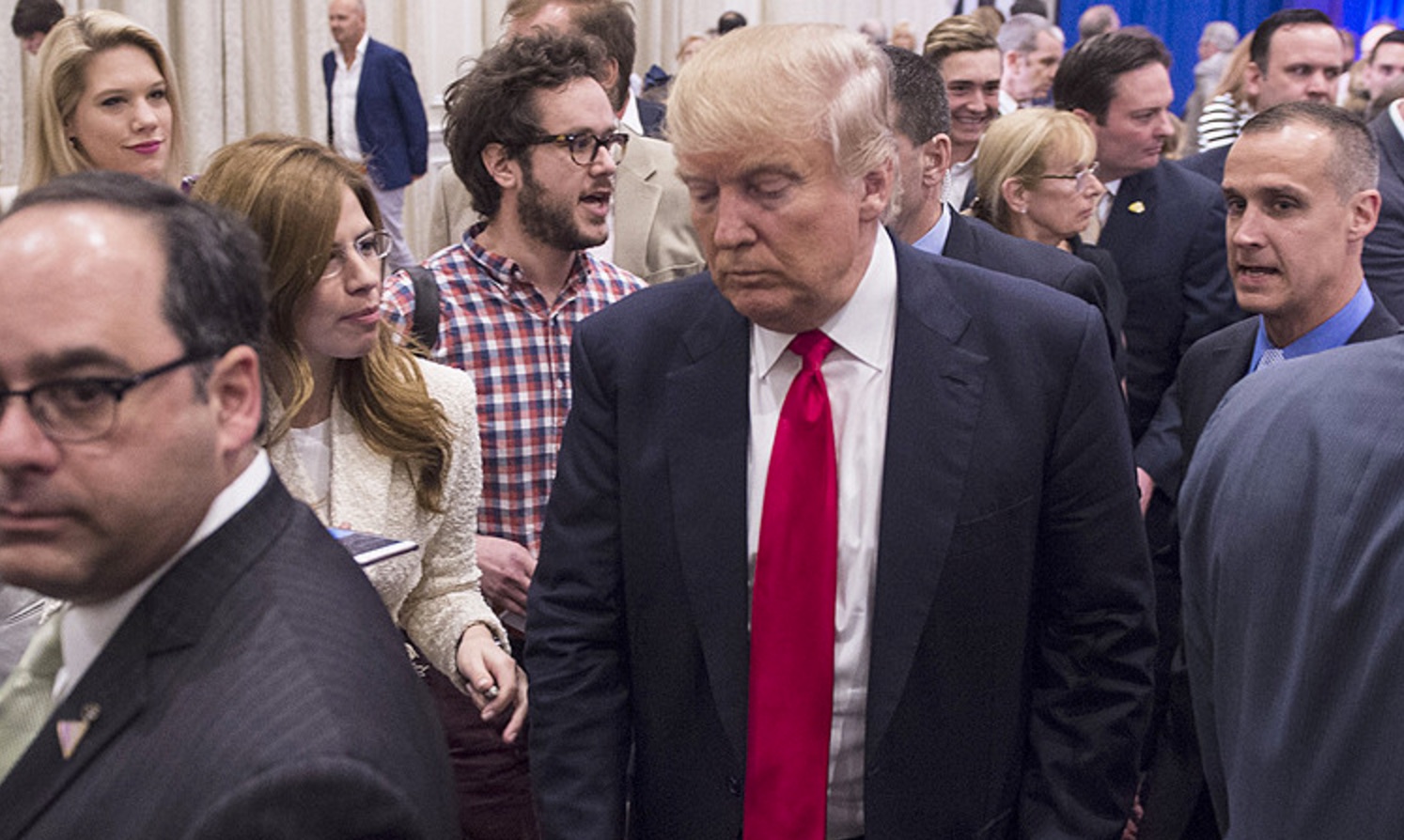A conservative friend of mine shared this opinion piece by Shelby Steele. It’s entitled, “The Exhaustion of American Liberalism”, and it appeared in the March 7th print edition of Wall Street’s own reliably conservative Murdoch broadsheet.
The thing that attracted me to this – and prompted me to analyze it – was, naturally, the title. “Exhaustion,” in this context, has a double meaning, doesn’t it? For liberals like me, the last several months have been absolutely exhausting. Watching the country to which my parents emigrated commence a rapid spiral down a dictatorial and autocratic hole is alarming; after all, they came here to escape dictatorial autocracy. But what I think Steele means here is that liberalism is “exhausted”, as in spent – empty.
I’m familiar with Mr. Steele, a preeminent black, conservative intellectual. He’s also a septuagenarian baby boomer, about the same age as Donald Trump. He’s been studying the dynamics of race in America and how he believes that racial “victimization” is a double-edged sword. His experience with the subject undoubtedly far surpasses mine.
But racism isn’t some abstract concept, but a very real thing, and Steele’s article speaks more to me about a generation gap than anything else. The progressive movement of the 60s begat the self-centered “me” generation of the 70s, then the yuppies of the 80s, and can trace its lineage all the way to the reactionary nihilism of Donald Trump. So, because of human mortality and the political leanings of the younger generations, any suggestion that liberalism is “exhausted” is something that piques my interest. Let’s examine.
The recent flurry of marches, demonstrations and even riots, along with the Democratic Party’s spiteful reaction to the Trump presidency, exposes what modern liberalism has become: a politics shrouded in pathos. Unlike the civil-rights movement of the 1950s and ’60s, when protesters wore their Sunday best and carried themselves with heroic dignity, today’s liberal marches are marked by incoherence and downright lunacy—hats designed to evoke sexual organs, poems that scream in anger yet have no point to make, and an hysterical anti-Americanism.
Ah, the heavy hand of generational condescension. It was only too short a time ago when the generation born in the 20s denounced the kids born in the 40s as degenerate, lazy louts. Their long, unkempt hair and their rock ‘n roll were, in the 60s, emblematic of America’s decline. Now, the hippie generation are the squares, lecturing people born after the mid-60s about how their generation knew how to protest appropriately. They wore their “Sunday best” and carried themselves with “heroic dignity,” whereas you lot show up in your jeans and t-shirts and ironic pink hats.
Do a Google image search for “60s protest” and you’ll see that it wasn’t all marches through Selma in jacket and tie, and that history didn’t end in 1964. Today’s pink pussy hat – a direct hommage to the President’s own description of his amorous tactics – is yesterday’s long hair and jeans.
All this suggests lostness, the end of something rather than the beginning. What is ending?
So far, we’ve seen Mr. Steele set up a fake comparative, and now he’s going to brew up the bespoke conclusion it was designed to support.
America, since the ’60s, has lived through what might be called an age of white guilt. We may still be in this age, but the Trump election suggests an exhaustion with the idea of white guilt, and with the drama of culpability, innocence and correctness in which it mires us.
White guilt is not actual guilt. Surely most whites are not assailed in the night by feelings of responsibility for America’s historical mistreatment of minorities. Moreover, all the actual guilt in the world would never be enough to support the hegemonic power that the mere pretense of guilt has exercised in American life for the last half-century.
White guilt is not angst over injustices suffered by others; it is the terror of being stigmatized with America’s old bigotries—racism, sexism, homophobia and xenophobia. To be stigmatized as a fellow traveler with any of these bigotries is to be utterly stripped of moral authority and made into a pariah. The terror of this, of having “no name in the street” as the Bible puts it, pressures whites to act guiltily even when they feel no actual guilt. White guilt is a mock guilt, a pretense of real guilt, a shallow etiquette of empathy, pity and regret.
This is all nonsense.
“White guilt” is being used here as a shield with which to excuse racism. Mid-19th century emancipation wasn’t the end of black America’s journey to freedom, but the beginning. It wasn’t until 100 years later – a mere 50 years ago – that our government codified the rights of minorities generally, and black Americans especially. The years immediately leading up to that legislation were tumultous, and that it took so long to do the right thing is a national dishonor.
Conventional wisdom now informs us that Trump’s surprising victory was due in large part to the “white working class” and their “economic insecurity”. It explains the populist reaction to Wall Street bailouts, free trade deals, and even Brexit in the UK. But this is all too simplistic – there are as many reasons why a vote was cast for Trump as there were votes cast. I believe that part of the general pro-Trump equation has to do with what Steele is describing here, but I’d put it all a different way. It’s not about people being exhausted with “mock” white guilt – it’s a reaction to the expansion of civil liberties and the social changes that have taken place with such recent celerity, driven by the younger generations whom Steele mocks as undeserving pussy-hat wearers.
The generation gap is nothing new, and we’re much more 1968 than 1963. We have our endless, rudderless wars. We have our LBJ and Nixon all wrapped up in one neat package. We also have acceptance of – and the expansion of – civil rights for LGBTQ Americans, and we have a recent, robust rejection of Confederate iconography.
Steele characterizes “white guilt” as a “terror of being stigmatized” as a bigot. Just this week, I appropriately and accurately referred to septuagenarian Carl Paladino as exactly that – a bigot. As a private citizen, you can be the racist, homophobic xenophobe you want to be and no one can stop you. As a public official, however, bigotry becomes a public issue. As someone who is charged with representing a diverse constituency, it becomes relevant. But when you strip away the fancy talk, Steele is saying that bigots are tired of being called out on it. Once a bigot is branded as such, he becomes a “pariah”, but Steele’s solution isn’t to end bigotry, but for people to just sort of ignore it and shut up about it.
It is also the heart and soul of contemporary liberalism. This liberalism is the politics given to us by white guilt, and it shares white guilt’s central corruption. It is not real liberalism, in the classic sense. It is a mock liberalism. Freedom is not its raison d’être; moral authority is.
When America became stigmatized in the ’60s as racist, sexist and militaristic, it wanted moral authority above all else. Subsequently the American left reconstituted itself as the keeper of America’s moral legitimacy. (Conservatism, focused on freedom and wealth, had little moral clout.) From that followed today’s markers of white guilt—political correctness, identity politics, environmental orthodoxy, the diversity cult and so on.
I think there is definitely a crisis in the American left in Trump’s America, we won’t find solutions from those who casually excuse people’s worst instincts and prejudices. Elderly Baby Boomers are not the future; Millenials, and to a lesser extent Generation X, are. It is the younger generations that are driving the social changes that Steele denounces as “mock liberalism”.
Unlike Baby Boomers, Generation X and Millenials don’t generally get hired right out of college and enjoy a job for life. The concept of “freedom” is one that means different things to different people, and to people of different ages.
There is “freedom from” and “freedom to”; negative liberty and positive liberty. We’ve always struggled politically to balance the two, as we grant Americans wider freedom to possess arms, and freedom from hunger and illness. As Boomers enjoy their single-payer Medicare, Millenials striving in the gig economy struggle to afford or obtain quality, affordable health insurance of any sort. As Boomers collect their Social Security benefits, Gen-Xers wonder whether the grand American bargain is going to still be around for them and their kids. Will the Boomers in Congress pull the Medicare rug out and privatize it? Will Social Security be strengthened or weakened? I enjoy the freedom to travel, to speak, to pray (or not), and myriad other freedoms we take for granted daily. I’d also like the freedom from usurious banks, predatory health insurers, and being taxed to keep Afghanistan safe.
Steele is arguing for the rights of Americans freely to express their bigotry without shame, and freedom from any consequences – public or private – that might derive therefrom. America didn’t “become stigmatized” in the 60s as “racist, sexist, and militaristic”. It had long been all of those things. It still is. That’s part of what makes America as a multicultural political experiment so interesting. The anti-Italian bigotry of the early 20th century is different how, exactly, from the anti-Muslim bigotry of today? Conservatives denounce the notion of equal pay for equal work today, just as they killed the Equal Rights Amendment almost forty years ago. “Political correctness” is a concept that now exists only in conservative thought, to justify and defend the notion that it’s ok for people to treat other people horribly on the basis of their color, gender, religion, background, etc. Steele’s denunciation of “political correctness” and “environmental orthodoxy” and the “diversity cult” underscore his thesis that it’s not the bigotry that’s the problem, it’s that some people won’t put up with it any longer.
This was the circumstance in which innocence of America’s bigotries and dissociation from the American past became a currency of hardcore political power. Barack Obama and Hillary Clinton, good liberals both, pursued power by offering their candidacies as opportunities for Americans to document their innocence of the nation’s past. “I had to vote for Obama,” a rock-ribbed Republican said to me. “I couldn’t tell my grandson that I didn’t vote for the first black president.”
This anecdote proves nothing. There’s no data underlying this conclusion that people only voted for President Obama because he is black. The substance of Obama’s candidacy was about as traditionally American as it gets, and his platform was not dissimilar from that of any Democratic candidate since (interestingly enough) the mid-60s. The fact of the 2008 global financial meltdown made the Presidential choice that year rather stark – do you vote for the panicky Senator whose running mate is woefully unprepared, or for the cool, calm, and collected guy who exudes competence? If you voted for Obama based solely on his race, that’s pretty ignorant.
For this man liberalism was a moral vaccine that immunized him against stigmatization. For Mr. Obama it was raw political power in the real world, enough to lift him—unknown and untested—into the presidency. But for Mrs. Clinton, liberalism was not enough. The white guilt that lifted Mr. Obama did not carry her into office—even though her opponent was soundly stigmatized as an iconic racist and sexist.
For a lot of women, Mrs. Clinton’s loss served to remind them that women still had a long way to go before they’ll truly be considered men’s equals. Mr. Trump wasn’t just “soundly stigmatized as an iconic racist and sexist”, he was factually proven to be both, yet won anyway. The pussy grabbing tape was proof of his sexism, and his entire political career was founded on the racist fiction that President Obama didn’t just not feel American, but that he was actually foreign-born and unqualified to govern – evidence be damned.
Perhaps the Obama presidency was the culmination of the age of white guilt, so that this guiltiness has entered its denouement. There are so many public moments now in which liberalism’s old weapon of stigmatization shoots blanks— Elizabeth Warren in the Senate reading a 30-year-old letter by Coretta Scott King, hoping to stop Jeff Sessions’s appointment as attorney general. There it was with deadly predictability: a white liberal stealing moral authority from a black heroine in order to stigmatize a white male as racist. When Ms. Warren was finally told to sit, there was real mortification behind her glaring eyes.
Yet when Senator Warren’s male colleagues read from the same text, they were not told to sit down and shut up. Note that Mr. Steele doesn’t address the substance of Mrs. King’s letter and testimony about Attorney General Sessions – merely the identities of the people involved. White liberal. Black heroine. White male. Who’s playing in the deep end of identity politics, now?
This liberalism evolved within a society shamed by its past. But that shame has weakened now. Our new conservative president rolls his eyes when he is called a racist, and we all—liberal and conservative alike—know that he isn’t one. The jig is up. Bigotry exists, but it is far down on the list of problems that minorities now face. I grew up black in segregated America, where it was hard to find an open door. It’s harder now for young blacks to find a closed one.
Especially the door to the jailhouse.
This is the reality that made Ms. Warren’s attack on Mr. Sessions so tiresome. And it is what caused so many Democrats at President Trump’s address to Congress to look a little mortified, defiantly proud but dark with doubt. The sight of them was a profound moment in American political history.
Dark with doubt about the anti-democratic autocrat temporarily occupying the Oval Office. As President Trump heaps praise on Phillipine murderer Rodrigo Duterte, calls North Korean concentration camp operator Kim Jong Un a “smart cookie”, and praises Vladimir Putin’s leadership, Americans are left wondering how it is that “economic insecurity” justifies all this ethical rot. America isn’t just a place, it’s an idea. Its promise of opportunity and liberty have attracted people from around the world for centuries. It’s not, however, some conservative rebuke against “political correctness” that gives people pause. It’s the erosion of the very concept of America. You don’t “make America great again” by excusing bigotry, playing footsie with dictators, and rejecting science and knowledge. You want to have playtime in your new America that no longer has to “apologize” for being horrible to minorities or women or gay people? That’s fine, I guess, but for an elderly Boomer to declare the end of “liberalism” – or its “exhaustion” – when the younger generations stand overwhelmingly at odds against you, beware of whom you label an “anachronism”.
Today’s liberalism is an anachronism. It has no understanding, really, of what poverty is and how it has to be overcome. It has no grip whatever on what American exceptionalism is and what it means at home and especially abroad. Instead it remains defined by an America of 1965—an America newly opening itself to its sins, an America of genuine goodwill, yet lacking in self-knowledge.
Declaring without proof that today’s liberals don’t know “what poverty is” is the anachronism. How condescending – it’s like the Fox News alerts that shame the poor as not really poor because they own TVs and microwaves. In what way do liberals have “no grip” on “what American exceptionalism is” or what it means? It’s Trump – not “liberals” – who is systematically defunding and weakening our diplomatic corps – the front lines around the world of the very idea of “America”. Liberalism today isn’t simply defined by a static 1965. It’s also informed by a President who bullshat his way into a disastrous quagmire in Iraq. Today’s liberals are the ones screaming bloody murder at how Reaganomics and its ceaseless hangover have utterly destroyed the American middle class, and brought about intense concentration of wealth. Today’s liberals aren’t just content to not be bigots, but also believe that programs like Social Security, Medicare, and Medicaid need to be strengthened, not weakened. Most of us think Obamacare didn’t go far enough, and we’ll be damned if we let the conservatives on the Hill erode what little progress we’ve made towards universal health coverage.
This liberalism came into being not as an ideology but as an identity. It offered Americans moral esteem against the specter of American shame. This made for a liberalism devoted to the idea of American shamefulness. Without an ugly America to loathe, there is no automatic esteem to receive. Thus liberalism’s unrelenting current of anti-Americanism.
Steele’s projection of liberalism as an “anti-American” identity is a decades-old trope that was rendered impotent in the 90s. It isn’t the mid-60s anymore, but it’s not the mid-80s, either. This isn’t a thoughtful exposition on the state of liberalism in Trump’s America – it’s a blunt caricature ripped from the pages of any random issue of the New York Post from when Mayor Koch was running the city.
Let’s stipulate that, given our history, this liberalism is understandable. But American liberalism never acknowledged that it was about white esteem rather than minority accomplishment. Four thousand shootings in Chicago last year, and the mayor announces that his will be a sanctuary city. This is moral esteem over reality; the self-congratulation of idealism. Liberalism is exhausted because it has become a corruption.
Four thousand shootings in Chicago count for more than an anti-liberal totem for conservatives to hoist when they want to feel morally superior. It’s a problem that isn’t solved by, e.g., more guns or the abolition of social programs. What, precisely, is the anti-liberal solution to Chicago’s shootings? Surely by now President Trump or one of the members of his parade of idiots and nepotists could have solved it? And what does “sanctuary city” have to do with it? “Sanctuary city” means the city won’t abide an unfunded mandate that its police forces do ICE‘s job for it. “Sanctuary city” means that the police won’t arrest an undocumented immigrant who reports a crime. What does Chicago’s status as a “sanctuary city” have to do with “four thousand shootings” at all? It’s a non-sequitur.
Steele’s piece tries inelegantly to do in a short column what Tom Wolfe did so brilliantly in Radical Chic & Mau-Mauing the Flak-Catchers. Social commentary about white guilt has been done better, earlier. That’s what Steele is talking about, after all: the time of the rich coastal elites and their radical chic moral superiority is over!
The problem is that Steele’s analysis – such as it is – is the real anachronism here. He’s still fighting the battles of the late 60s and early 70s, and sees contemporary politics through that lens. Ironically enough, he is a part of the coastal elite – working at Stanford’s Hoover Institution, which is limited both in its middle-classhood and economic anxiety.
Liberalism isn’t over. Hell, the Bernie Sanders rally at UB in 2016 had a much bigger turnout with much less promotion or fanfare than Trump’s circus at the KeyBank Center. The idea that government has a role in the economy – and can solve problems – didn’t go away. The concept of “don’t be a complete prick to people different from you” isn’t dead or “exhausted” in any sense of the term. On the contrary, while there exists now a backlash against, perhaps, Obama and same-sex marriage and whatever other bogeyman you can conjure, know that it’s only temporary, and the future lives in liberty and democracy, rather than dictatorship and hatred. The future is with the youth, and they don’t wish President Obama dead or characterize Michelle Obama as a male gorilla.
But for now, the radical chic is to excuse bigotry and to otherwise “Make America Great Again”.
